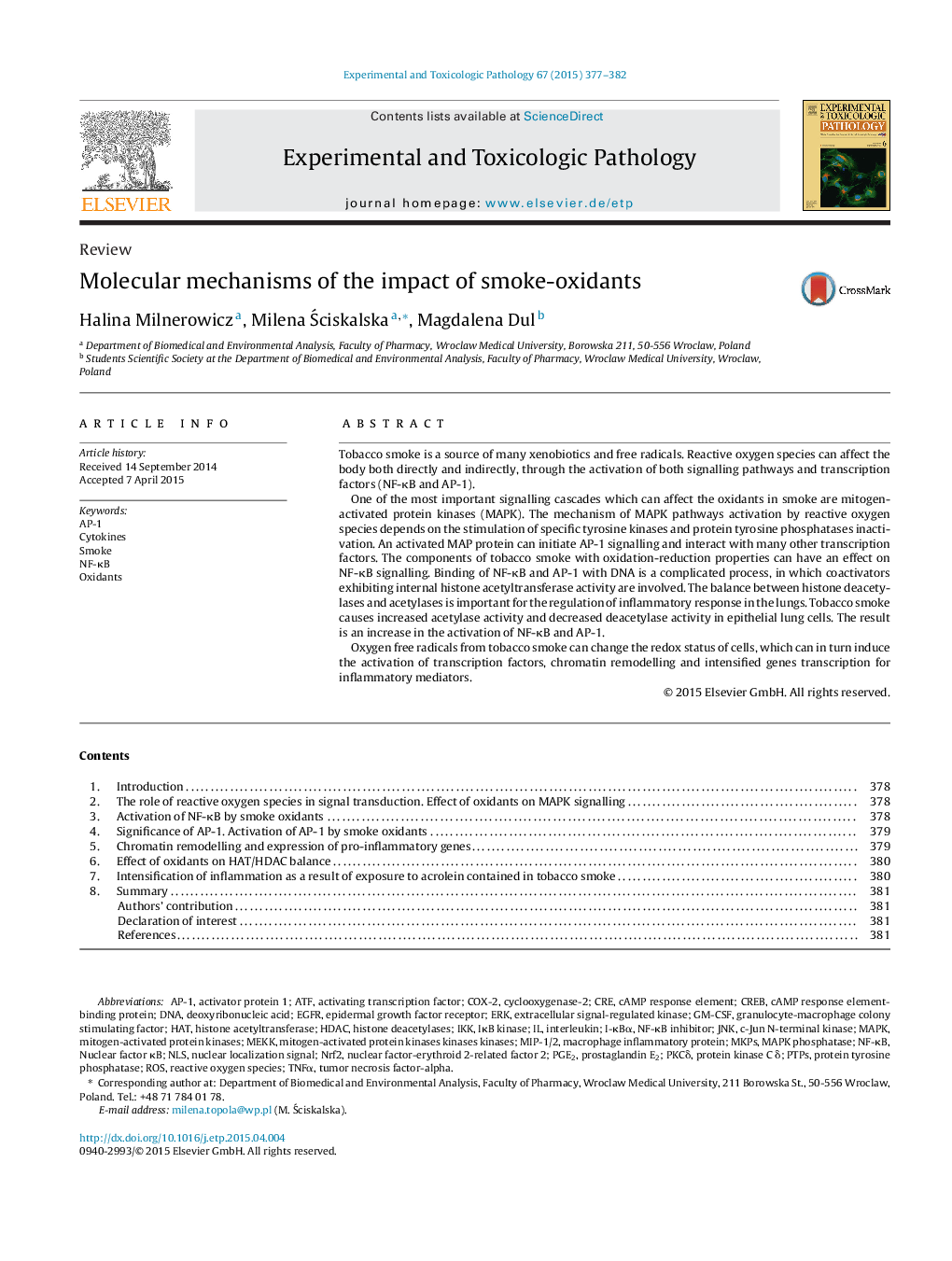| کد مقاله | کد نشریه | سال انتشار | مقاله انگلیسی | نسخه تمام متن |
|---|---|---|---|---|
| 5817088 | 1556833 | 2015 | 6 صفحه PDF | دانلود رایگان |
Tobacco smoke is a source of many xenobiotics and free radicals. Reactive oxygen species can affect the body both directly and indirectly, through the activation of both signalling pathways and transcription factors (NF-κB and AP-1).One of the most important signalling cascades which can affect the oxidants in smoke are mitogen-activated protein kinases (MAPK). The mechanism of MAPK pathways activation by reactive oxygen species depends on the stimulation of specific tyrosine kinases and protein tyrosine phosphatases inactivation. An activated MAP protein can initiate AP-1 signalling and interact with many other transcription factors. The components of tobacco smoke with oxidation-reduction properties can have an effect on NF-κB signalling. Binding of NF-κB and AP-1 with DNA is a complicated process, in which coactivators exhibiting internal histone acetyltransferase activity are involved. The balance between histone deacetylases and acetylases is important for the regulation of inflammatory response in the lungs. Tobacco smoke causes increased acetylase activity and decreased deacetylase activity in epithelial lung cells. The result is an increase in the activation of NF-κB and AP-1.Oxygen free radicals from tobacco smoke can change the redox status of cells, which can in turn induce the activation of transcription factors, chromatin remodelling and intensified genes transcription for inflammatory mediators.
Journal: Experimental and Toxicologic Pathology - Volume 67, Issues 7â8, JulyâAugust 2015, Pages 377-382
